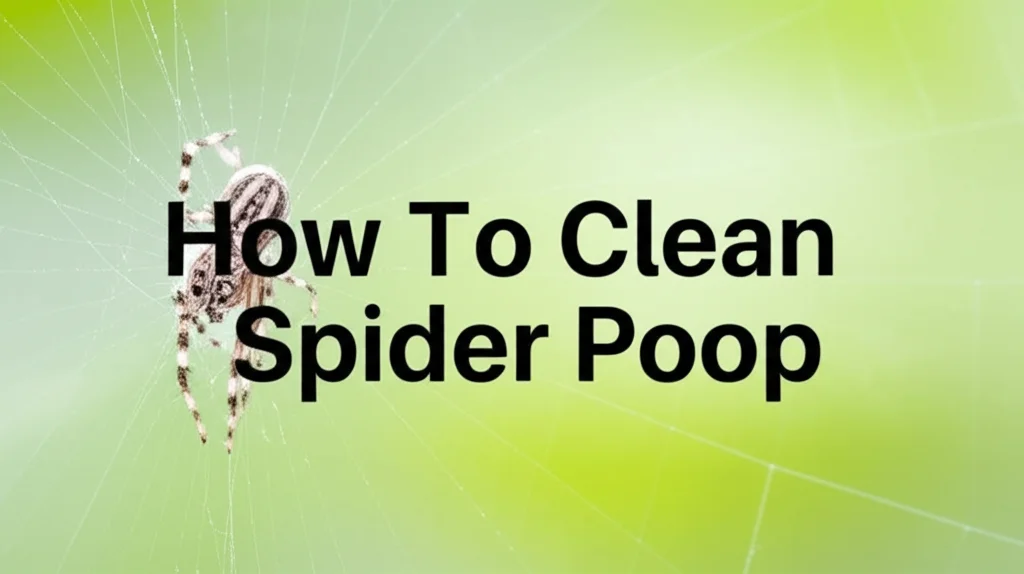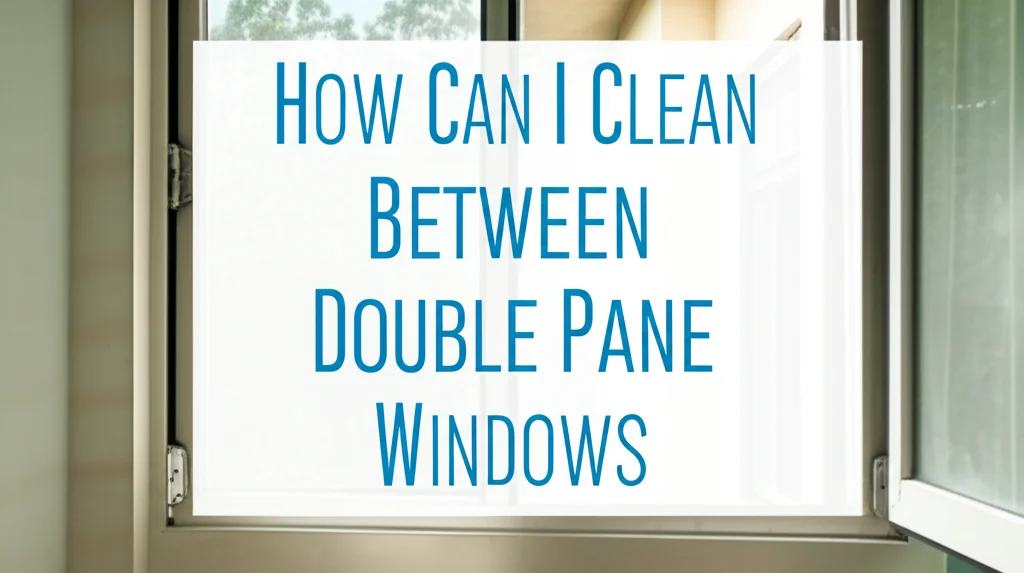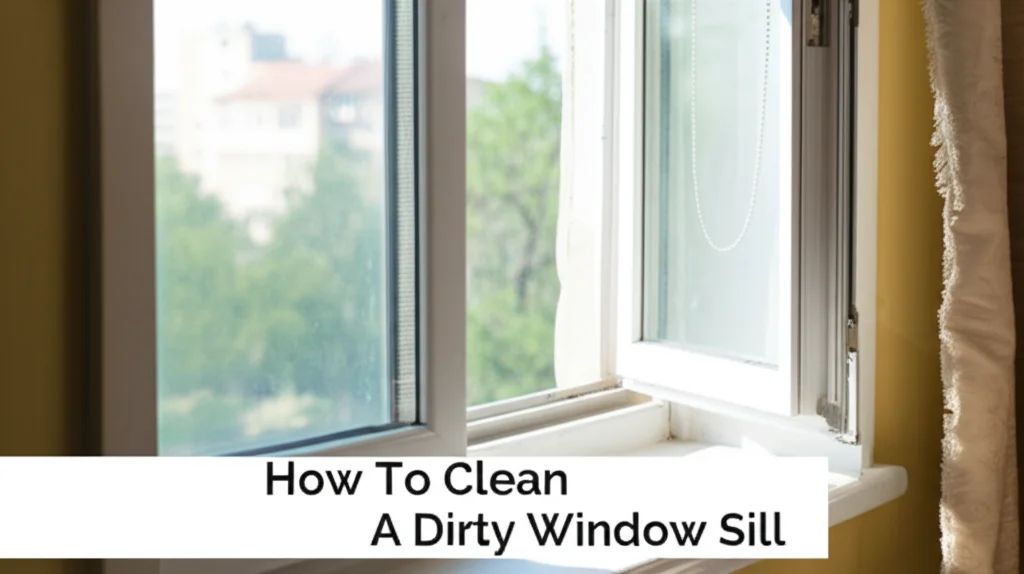· Home Cleaning · 6 min read
How To Clean Spider Poop

How To Clean Spider Poop: A Complete Guide
Ever noticed tiny dark specks in corners, ceilings, or around windowsills? You might be looking at spider poop! While spiders are beneficial for controlling other insects, their droppings aren’t exactly welcome décor. This article will show you how to effectively clean spider poop, understand what it looks like, and prevent it from accumulating in the first place. We’ll cover everything from simple dusting to more thorough cleaning methods, ensuring a tidy and pest-free home. Let’s dive in and learn how to tackle this often-overlooked cleaning task.
Quick Answer:
Cleaning spider poop is usually as simple as dusting or vacuuming. For stubborn spots, a damp cloth with mild soap works well. Regular cleaning and reducing spider access points will prevent buildup.
Takeaway:
- Dust and vacuum regularly.
- Use a damp cloth with mild soap for stubborn spots.
- Seal cracks and crevices to prevent spider entry.
Understanding Spider Poop
Before we get into cleaning, let’s understand what spider poop actually is. It’s not like the droppings of mammals or birds. Spider poop, also called frass, consists of the undigested exoskeletons of their prey – mostly insects. It often looks like tiny dark specks, similar to pepper or coffee grounds.
These specks are usually found near spider webs, hiding spots, or areas where spiders frequently hunt. The color can vary depending on the spider’s diet, ranging from black to brown or even reddish. Identifying these small marks is the first step in keeping your home clean and understanding the level of spider activity. Knowing what you’re dealing with makes the cleaning process much easier and more effective.
Simple Dusting and Vacuuming for Spider Droppings
The easiest way to remove spider poop is through regular dusting and vacuuming. This is especially effective for light accumulations of frass on surfaces like shelves, window sills, and baseboards. A microfiber cloth is ideal for dusting, as it traps the particles effectively without spreading them around.
Vacuuming is great for reaching corners, ceilings, and areas where dusting is difficult. Use the brush attachment to avoid scratching surfaces. Don’t forget to vacuum under furniture and along edges where spider poop tends to collect. Regular vacuuming not only removes spider poop but also eliminates dust mites and other allergens, contributing to a healthier home environment. This simple routine can significantly reduce the visible signs of spider activity.
Cleaning Stubborn Spider Poop Stains
Sometimes, spider poop can leave behind stubborn stains, especially on porous surfaces. For these situations, a damp cloth with a mild cleaning solution is your best bet. Mix a few drops of dish soap with warm water and gently wipe the affected area.
Avoid using harsh chemicals or abrasive cleaners, as these can damage surfaces. After wiping, rinse the area with clean water and dry it thoroughly. For tougher stains, you can try a paste of baking soda and water, applying it to the stain for a few minutes before wiping it away. Remember to test any cleaning solution in an inconspicuous area first to ensure it doesn’t cause discoloration or damage. https://beacleaner.com/how-to-remove-baking-soda-residue-from-carpet/ provides helpful tips on removing baking soda residue.
Dealing with Spider Poop on Different Surfaces
Different surfaces require different cleaning approaches. Here’s a quick guide:
- Hard Surfaces (wood, tile, laminate): Damp cloth with mild soap.
- Fabric (upholstery, curtains): Vacuum with upholstery attachment, spot clean with fabric cleaner.
- Carpet: Vacuum thoroughly, spot clean with carpet cleaner. https://beacleaner.com/how-to-clean-a-carpet-with-a-wet-dry-vac/ can help with deep carpet cleaning.
- Ceilings: Use a long-handled duster or vacuum with an extension wand.
Preventing Spider Poop Buildup
The best way to deal with spider poop is to prevent it from accumulating in the first place. This involves reducing spider access to your home and controlling their food source – other insects.
Seal cracks and crevices in your foundation, walls, and around windows and doors. Repair any damaged screens and ensure doors and windows fit snugly. Regularly clean up cobwebs and remove clutter where spiders like to hide. Consider using outdoor lighting that doesn’t attract insects, as these insects attract spiders. Keeping your home clean and well-maintained will make it less appealing to spiders and reduce the amount of spider poop you need to clean.
Natural Spider Repellents
If you want to deter spiders naturally, several options can help. Peppermint oil is a popular choice – spiders dislike the strong scent. Mix a few drops of peppermint oil with water in a spray bottle and spray around entry points, windowsills, and areas where you’ve seen spiders.
Other natural repellents include vinegar, citrus peels, and cedarwood. You can also try placing chestnuts or walnuts around your home, as spiders are said to avoid them. While these natural repellents may not eliminate spiders entirely, they can help reduce their numbers and discourage them from entering your home.
When to Call a Professional
While most spider poop situations can be handled with DIY cleaning methods, there are times when it’s best to call a professional pest control service. If you have a severe spider infestation, or if you’re dealing with venomous spiders, it’s important to seek professional help.
A pest control expert can identify the type of spider, assess the extent of the infestation, and recommend the most effective treatment plan. They can also provide advice on preventing future infestations. Don’t hesitate to call a professional if you’re concerned about your safety or if you’re unable to control the spider population on your own. https://beacleaner.com/how-to-find-bed-bugs-during-the-day/ offers advice on identifying pest problems.
FAQ About Cleaning Spider Poop
Q: Is spider poop harmful to humans?
A: No, spider poop is not harmful to humans. It’s primarily composed of insect exoskeletons and doesn’t carry diseases. However, some people may be allergic to the dust and debris associated with spider activity.
Q: How often should I clean for spider poop?
A: Regular dusting and vacuuming once a week is usually sufficient. Increase frequency if you live in an area with a high spider population.
Q: What if I can’t reach spider poop on the ceiling?
A: Use a long-handled duster or a vacuum with an extension wand. You can also try wrapping a microfiber cloth around a broom handle.
Q: Will cleaning spider poop get rid of spiders?
A: Cleaning spider poop won’t necessarily get rid of spiders, but it will remove their droppings and make your home less attractive to them. Combine cleaning with preventative measures like sealing cracks and crevices.
Q: Are there any specific cleaners I should avoid when cleaning spider poop?
A: Avoid harsh chemicals and abrasive cleaners, as these can damage surfaces. Stick to mild soap and water or baking soda paste.
Conclusion
Cleaning spider poop doesn’t have to be a daunting task. With regular dusting, vacuuming, and a few simple cleaning solutions, you can easily keep your home free of these unsightly specks. Remember that prevention is key – sealing entry points and controlling insect populations will significantly reduce spider activity. By following the tips outlined in this guide, you can enjoy a clean, pest-free home. Don’t let spider poop bother you any longer – take control and reclaim your space! If you’re looking for more cleaning advice, check out our guide on https://beacleaner.com/how-to-clean-hardwood-floors-with-vinegar/ for effective hardwood floor cleaning techniques.




